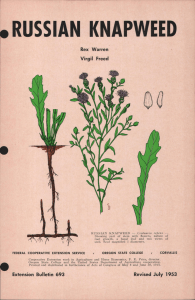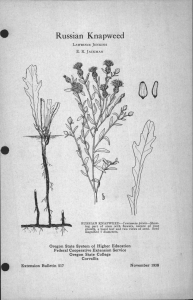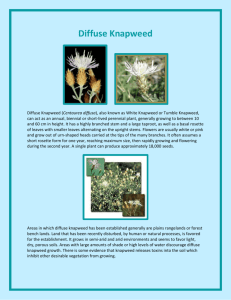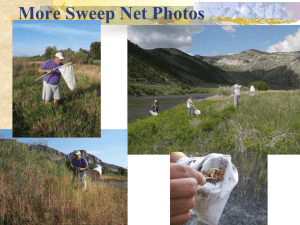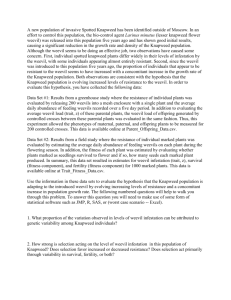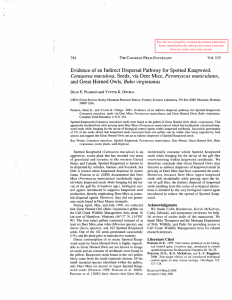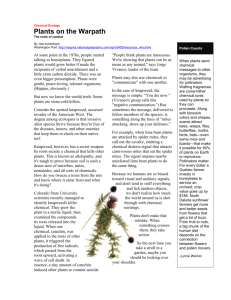Spotted Knapweed - Johnson County Weed & Pest
advertisement
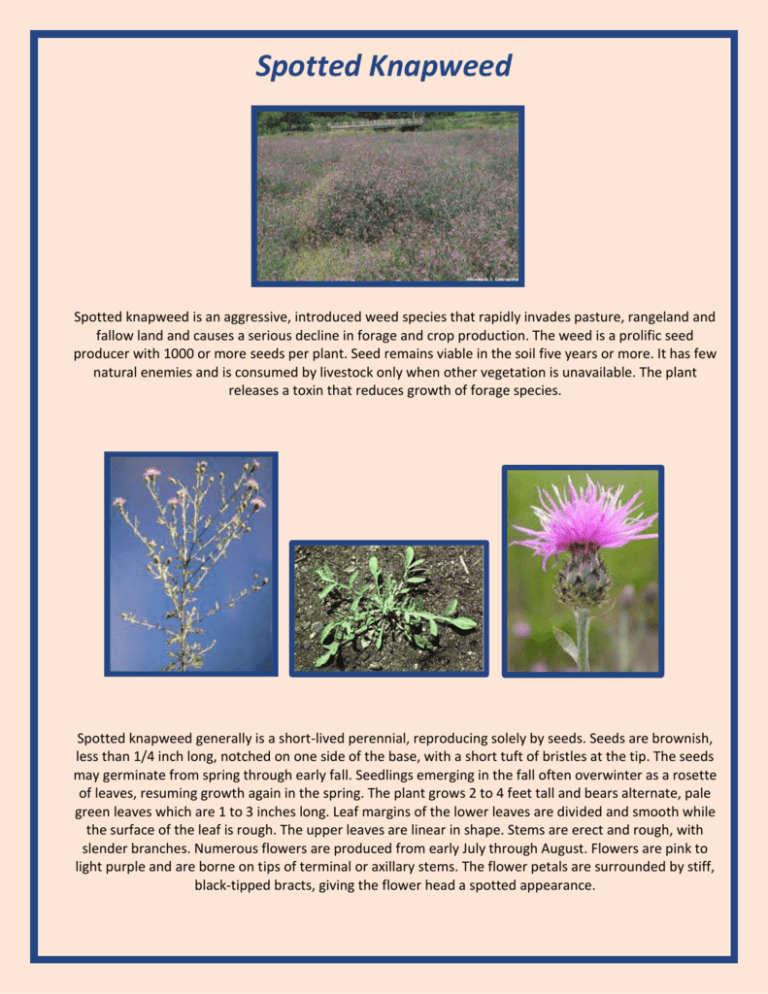
Spotted Knapweed Spotted knapweed is an aggressive, introduced weed species that rapidly invades pasture, rangeland and fallow land and causes a serious decline in forage and crop production. The weed is a prolific seed producer with 1000 or more seeds per plant. Seed remains viable in the soil five years or more. It has few natural enemies and is consumed by livestock only when other vegetation is unavailable. The plant releases a toxin that reduces growth of forage species. Spotted knapweed generally is a short-lived perennial, reproducing solely by seeds. Seeds are brownish, less than 1/4 inch long, notched on one side of the base, with a short tuft of bristles at the tip. The seeds may germinate from spring through early fall. Seedlings emerging in the fall often overwinter as a rosette of leaves, resuming growth again in the spring. The plant grows 2 to 4 feet tall and bears alternate, pale green leaves which are 1 to 3 inches long. Leaf margins of the lower leaves are divided and smooth while the surface of the leaf is rough. The upper leaves are linear in shape. Stems are erect and rough, with slender branches. Numerous flowers are produced from early July through August. Flowers are pink to light purple and are borne on tips of terminal or axillary stems. The flower petals are surrounded by stiff, black-tipped bracts, giving the flower head a spotted appearance. Bio-Control All of the following species have been released in Johnson County with moderate success. Knapweed Root Weevil Cyphocleonus achates This insect can safely be considered "The King" of spotted knapweed biocontrol. A large, conspicuous insect, it lays its eggs on the top of the knapweed's root crown. After the eggs hatch, the larvae burrow into the root. This larval feeding destroys knapweed's vascular root tissue and prevents the plant from transporting water and nutrients. Agapeta zoegana- yellow moth as an adult, the larvae of this insect mine the root of Spotted Knapweed Knapweed Seed Head Weevil Larinus Obtusus or minutus weevils: Larval feeding in the seed head destroys the knapweed seed before it matures. One larva can consume 100% of the seed in a single seed head. When combined with the widespread knapweed seed head flies, the seed head weevil can reduce knapweed seed production by 95%. Seed Head Flies Urphora affinis, U. quadrifasciata, Cheatorellia acrolophi, and Terellia virens are seed head fliesthe larvae of all attack the seed heads. Mechanical Control- hand pulling can be an effective means of controlling especially isolated infestations; however, reportedly there are toxins that can enter open wounds on hands so gloves should be worn. Pulling should be done prior to flower emergence unless the seed heads are properly disposed of. Mowing is not recommended as plants generally still will produce seed below mower height. Chemical Control- various herbicides are effective at controlling spotted knapweed prior to flower emergence. Infested sites should be annually monitored and treated as necessary. County Impact- the District has had an intensive program for Spotted Knapweed for several years. This weed has devastated thousands of acres in western Montana and serves as motivation for Johnson County and the State of Wyoming to aggressively treat this invader. We continue to battle it along especially the interstate ROW’s (presumably coming from Mt), however it has shown up on highway 16 West and every year new infestations are discovered and treated in the county. Other infestations that have occurred in the county appear to be associated with pipeline development, fire equipment, greenhouse/nurseries and lumber yards. Residents should use extreme caution when receiving ornamentals or lumber that originated in Montana or Washington. It is at home growing anywhere from the mountains to the plains. Recreationalists to the Big Horn Mountains should make every effort to clean their atv’s and vehicles prior to use on the Forest for not only all the other bad weeds out there but especially for Spotted Knapweed. Johnson County Weed & Pest Control District (307) 684 - 5715
